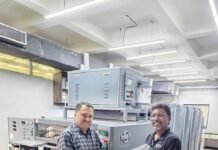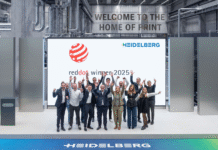Fujifilm India has been primarily a major consumables supplier over the years with its plates, CtPs and inks division, Fuji Sericol. However, since Printpack 2015, Fujifilm India has barged onto the mainstream with its wide-format and signage printers as well. At drupa 2016, the Fujifilm stand stood tall displaying all of its technological prowess. The Jet Press 720S shown at its stand in drupa was one of the key highlights of the show. Speaking to SM Ramprasad, assistant vice president, Graphic Arts Division, Fujifilm India, we try to understand the overall dynamics of the company in India.
According to Ramprasad, the Indian digital industry has seen phenomenal makeover over the last few years with actual change-over beginning to happen now. “The overall situation in India, as far as digital is concerned, is very positive at the moment. The market has moved on from the evaluative to the decisionmaking stage now. Even at drupa 2016, we have received tremendous response to our digital press that we showed there. Talking from the Indian perspective, we have at least 50 to 60 probabilities from India who are interested in this press. And this is a phenomena which is more or less happening with all digital press suppliers. So digital technology is now seen to be complimenting the existing traditional set-up of a printer,” he says.
The Indian offset industry is also showing good progress and performing really well in some of the segments such as packaging or on-demand book printing, feels Ramprasad. “We are doing well in terms of our plates business in both commercial printing as well as newspaper segments. We are growing by at least 30% in the commercial printing segment and showing similar growth in the newspaper segment as well. In the first half of the current financial year (2016–17), we have had around 10 new CtP installations. We are aiming at an overall figure of 30 CtPs by the end of the year which includes thermal, violet and CtCPs.”
In Europe, Japan and the American markets, Fujifilm has been promoting its Superia Technology for prepress. Ramprasad tells us that this is a concept which not only covers the area of plates but also the chemistry involved and software like XMF. “Today, typically for any commercial or newspaper printer, prepress constitutes only 5% of the total cost of printing. So there is not much further scope for reduction of costs in this area. However, if a customer opts for a quality-oriented solution such as Superia Technology, this has a major impact on the remaining 95% as he will be able to reap the benefits of having a worldclass prepress technology boosting his overall press room quality.”
The wide-format industry is also performing really well for the company at the moment. Although Fujifilm India had a slow start by initially concentrating on having proper infrastructure and manpower resources, this approach has paid rich dividends. “In January 2016, Fujifilm India opened its first demo centre in Mumbai to showcase and demonstrate its flagship products and its capabilities. The unique demo centre has been designed to give a real-time experience of the company’s wide-format printing capabilities. As of now, we have around 30 installations of our UV wide-format printers in India. Most of these printers are in the mid-level segment,” he informs.
Ramprasad further adds that the Indian wide-format market is in a very positive mood at the moment. “Fujifilm India has got good traction in wide-format as we have got the right product with the right applications at the right time. And since we are one of the few companies which has got direct representation in India both in terms of sales and service, this has helped our customers to take decisions in our favour,” he quips. Fujifilm India has just launched India’s first eco-solvent printer called the Vybrant 1800, which is especially aimed at the indoor and outdoor Indian signage market and is made completely in India, except for the Fuji printheads, to strengthen its wideformat printer lineup.


















